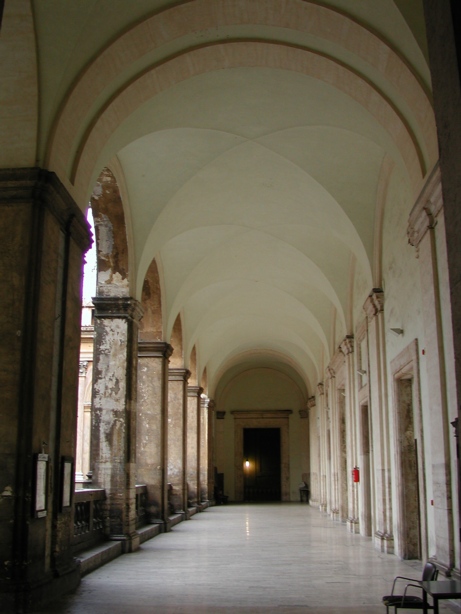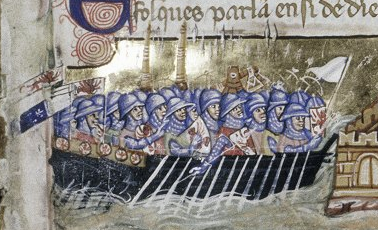|
Clemente X
Pope Clement X (; ; 13 July 1590 – 22 July 1676), born Emilio Bonaventura Altieri, was head of the Catholic Church and ruler of the Papal States from 29 April 1670 to his death on 22 July 1676. Emilio Bonaventura Altieri, born in Rome in 1590, belonged to the Papal nobility. He received a doctorate in law and held various positions within the Catholic Church, including Bishop of Camerino and Superintendent of the Papal Exchequer. At the age of almost 80, he was elected Pope Clement X in 1670 after a four-month-long conclave. As Pope, he canonized and beatified various saints, promoted good relations between Christian countries, and made efforts to preserve the Altieri family name by adopting the Paoluzzi family. He also established a new tax in Rome, which led to conflicts with ambassadors and cardinals. Clement X celebrated the fourteenth jubilee of the holy year in 1675 despite his old age. During his pontificate, he created 20 cardinals, including Pietro Francesco Orsin ... [...More Info...] [...Related Items...] OR: [Wikipedia] [Google] [Baidu] |
List Of Popes
This chronological list of the popes of the Catholic Church corresponds to that given in the under the heading "" (The Roman Supreme Pontiffs), excluding those that are explicitly indicated as antipopes. Published every year by the Roman Curia, the no longer #Numbering of popes, identifies popes by regnal number, stating that it is impossible to decide which pope represented the legitimate succession at various times. The 2001 edition of the introduced "almost 200 corrections to its existing biographies of the popes, from St Peter to John Paul II". The corrections concerned dates, especially in the first two centuries, birthplaces and the family name of one pope. The term ''Pope (word), pope'' () is used in several churches to denote their high spiritual leaders (for example Coptic pope). This title is usually used in English to refer to the head of the Catholic Church. The Catholic pope uses various titles by tradition, including , , and . Each title has been added by unique ... [...More Info...] [...Related Items...] OR: [Wikipedia] [Google] [Baidu] |
Altieri Family
The House of Altieri was an ancient noble family of Rome, present in the history of the city since the Middle Ages, yet now extinct in the noble line. In addition to the title of Prince granted by the Pontiffs, branches of the Altieri were also part of the aristocracy of Genoa and of Venice. The family consolidated its position in the ranks of the great senatorial and cardinal aristocracy thanks to dynastic marriages with families like the Colonna, Paluzzi, Chigi, Odescalchi, Doria-Pamphili, Ruspoli, Barberini, Borghese and in more recent times the di Napoli Rampolla, relatives of the famous Cardinal Mariano Rampolla del Tindaro, Secretary of State of Pope Leo XIII, not to mention a multitude of princely families of Europe. Their fiefs consisted of the principality of Oriolo Romano and Vejano and the duchy of Monterano in the '' Alto Lazio''. The Altieri were among the protagonists of the history of the city from the earlier Middle Ages until the second half of the twen ... [...More Info...] [...Related Items...] OR: [Wikipedia] [Google] [Baidu] |
Nuncio
An apostolic nuncio (; also known as a papal nuncio or simply as a nuncio) is an ecclesiastical diplomat, serving as an envoy or a permanent diplomatic representative of the Holy See to a state or to an international organization. A nuncio is appointed by and represents the Holy See, and is the head of the diplomatic mission, called an apostolic nunciature, which is the equivalent of an embassy. The Holy See is legally distinct from the Vatican City or the Catholic Church. In modern times, a nuncio is usually an Archbishop. An apostolic nuncio is generally equivalent in rank to that of ambassador extraordinary and plenipotentiary, although in Catholic countries the nuncio often ranks above ambassadors in diplomatic protocol. A nuncio performs the same functions as an ambassador and has the same diplomatic privileges. Under the 1961 Vienna Convention on Diplomatic Relations, to which the Holy See is a party, a nuncio is an ambassador like those from any other country. The Vienn ... [...More Info...] [...Related Items...] OR: [Wikipedia] [Google] [Baidu] |
Roman College
The Roman College (, ) was a school established by St. Ignatius of Loyola in 1551, just 11 years after he founded the Society of Jesus (Jesuits). It quickly grew to include classes from elementary school through university level and moved to several successive locations to accommodate its burgeoning student population. With the patronage of Pope Gregory XIII, the final seat of the Roman College was built in 1584 near the center of Rome's most historic Pigna district, on what today is called Piazza del Collegio Romano, adding the church of St. Ignatius in 1626, and a renowned observatory in 1787. The college remained at this location for 286 years until the revolutionary Capture of Rome in 1870.In 1870, the new Italian government confiscated the property of the university and their building (that eventually became the Ennio Quirino Visconti Liceo Ginnasio), which forced the university to transfer to the Palazzo Gabrielli-Borromeo on the Via del Seminario. In 1873, the remainin ... [...More Info...] [...Related Items...] OR: [Wikipedia] [Google] [Baidu] |
Orsini Family
The House of Orsini is an Nobility of Italy, Italian noble family that was one of the most influential princely families in Middle Ages, medieval Italy and Renaissance Rome. Members of the Orsini family include five popes: Pope Stephen II, Stephen II (752–757), Pope Paul I, Paul I (757–767), Pope Celestine III, Celestine III (1191–1198), Pope Nicholas III, Nicholas III (1277–1280), and Pope Benedict XIII, Benedict XIII (1724–1730). The family also included 34 Cardinal (Catholic Church), cardinals, numerous ''condottieri'', and other significant political and religious figures. The Orsini are part of the Black nobility who were Roman aristocratic families who supported the Popes in the governance of the Papal States. Origins According to their own family legend, the Orsini are descended from the Julio-Claudian dynasty of ancient Rome. The Orsini carried on a political feud with the Colonna family for centuries in Rome, until it was stopped by Papal Bull in 1511. In 1571 ... [...More Info...] [...Related Items...] OR: [Wikipedia] [Google] [Baidu] |
Colonna Family
The House of Colonna is an Italian noble family, forming part of the papal nobility. It played a pivotal role in Middle Ages, medieval and Roman Renaissance, Renaissance Rome, supplying one pope (Pope Martin V, Martin V), 23 cardinals and many other Catholic Church, church and political leaders. Other notable family members are Vittoria Colonna, close friend of Michelangelo, Marcantonio II Colonna (Marcantonio Colonna), leader of the papal fleet in the Battle of Lepanto (1571) and Costanza Colonna, patron and protector of Caravaggio. The family was notable for its bitter feud with the Orsini family over their influence in Rome, which was eventually settled by the issuing of the papal bull ''Pax Romana'' by Pope Julius II in 1511. In 1571, the heads of both families married nieces of Pope Sixtus V. Thereafter, historians recorded that "no peace had been concluded between the princes of Christendom, in which they had not been included by name". Today, the family is led by Don Prosper ... [...More Info...] [...Related Items...] OR: [Wikipedia] [Google] [Baidu] |
Giambattista Altieri
Giovanni Battista Altieri (20 June 1589 – 26 November 1654) was an Italian Catholic Cardinal. Early life Giovanni Battista Altieri was born 20 June 1589 in Rome, the son of Lorenzo Altieri and Vittoria Delfin, a noble Venetian lady. Altieri was the older brother of Emilio Bonaventura Altieri who was elected to the papal throne as Pope Clement X in 1670. He was educated in Rome and received a doctorate in theology and ''utroque iure''. Ecclesiastic career The Palazzo Altieri; commissioned by Giambattista Altieri. He was ordained on 1 December 1613 and became a theologian of the patriarchal Vatican basilica. In 1624 he was elected Bishop of Camerino and consecrated by Cardinal Scipione Borghese, Cardinal-Priest of San Crisogono, with Raffaele Inviziati, Bishop Emeritus of Cefalonia e Zante, and Vincenzo Landinelli, Bishop Emeritus of Albenga, serving as co-consecrators. He remained bishop of that diocese until he resigned to allow for his brother Emilio to be appoi ... [...More Info...] [...Related Items...] OR: [Wikipedia] [Google] [Baidu] |
Gentile Dolfino
Gentile Dolfin (died 1601) was a Roman Catholic prelate, member of the Delfin family, who served as Bishop of Camerino (1596–1601). ''(in Latin)'' ''(in Latin)'' Biography On 18 December 1596, Gentile was appointed during the papacy of Pope Clement VIII as Bishop of Camerino The Italian Archdiocese of Camerino-San Severino Marche () is a Latin diocese of the Catholic Church The Catholic Church (), also known as the Roman Catholic Church, is the List of Christian denominations by number of members, largest C .... He served as Bishop of Camerino until his death on 4 March 1601. References External links and additional sources * (for Chronology of Bishops) * (for Chronology of Bishops) 16th-century Italian Roman Catholic bishops 17th-century Italian Roman Catholic bishops Bishops appointed by Pope Clement VIII 1508 deaths {{16C-Italy-RC-bishop-stub ... [...More Info...] [...Related Items...] OR: [Wikipedia] [Google] [Baidu] |
Flaminio Delfin
Flaminio may refer to: Geography * Flaminio (Rome), a quartiere * Flaminio – Piazza del Popolo (Rome Metro), an underground station * Rignano Flaminio, a comune in the Metropolitan City of Rome * Stadio Flaminio The Stadio Flaminio is a stadium in Rome. It lies along the Via Flaminia, three kilometres northwest of the city centre, 300 metres away from the Parco di Villa Glori. The interior spaces include a covered swimming pool, rooms for fencing, amate ..., a stadium in Rome Other * Il Flaminio, a 1735 comic opera by Giovanni Battista Pergolesi {{disambig, geodis ... [...More Info...] [...Related Items...] OR: [Wikipedia] [Google] [Baidu] |
Republic Of Venice
The Republic of Venice, officially the Most Serene Republic of Venice and traditionally known as La Serenissima, was a sovereign state and Maritime republics, maritime republic with its capital in Venice. Founded, according to tradition, in 697 by Paolo Lucio Anafesto, over the course of its History of the Republic of Venice, 1,100 years of history it established itself as one of the major European commercial and naval powers. Initially extended in the ''Dogado'' area (a territory currently comparable to the Metropolitan City of Venice), during its history it annexed a large part of Northeast Italy, Istria, Dalmatia, the coasts of present-day Montenegro and Albania as well as numerous islands in the Adriatic Sea, Adriatic and eastern Ionian Sea, Ionian seas. At the height of its expansion, between the 13th and 16th centuries, it also governed Crete, Cyprus, the Peloponnese, a number of List of islands of Greece, Greek islands, as well as several cities and ports in the eastern Me ... [...More Info...] [...Related Items...] OR: [Wikipedia] [Google] [Baidu] |
Delfin (family)
The Delfin family, singular Dolfin or Delfin '', is a prominent noble family of Venice, part of the twelve original noble lineages of the Republic, known as the "apostolic families", thought to have elected the first Doge of Venice in the year 697 a.C. Notable members * Domenico Dolfin, Duke of Candia (1216-1217). * Baldovino Dolfin (1275-1335), statesman. * Giacomo Dolfin, Duke of Candia (1261-1262) * Giovanni Dolfin (c. 1290-1361), 57th Doge of Venice. * Leonardo Delfino (1353-1415) Patriarch of Alexandria. * Dolfin Dolfin, captain during the fall of Constantinople (1453) * Zaccaria Delfino (1527–1583), Cardinal (by Pious IV). * Giovanni Delfin (1529-1584), Bishop of Brescia and Torcello. * Gentile Dolfino (+1601), Bishop of Camerino. * Giovanni Delfin (1545-1622), Cardinal (by Clemens VIII) * Flaminio Delfin (1552-1605), Commander General of the Papal Armies. * Vittoria Delfin, mother of Pope Clement X. * Giovanni Delfino (1589-1651), bishop of Belluno. * Giovanni Dolfin ... [...More Info...] [...Related Items...] OR: [Wikipedia] [Google] [Baidu] |



